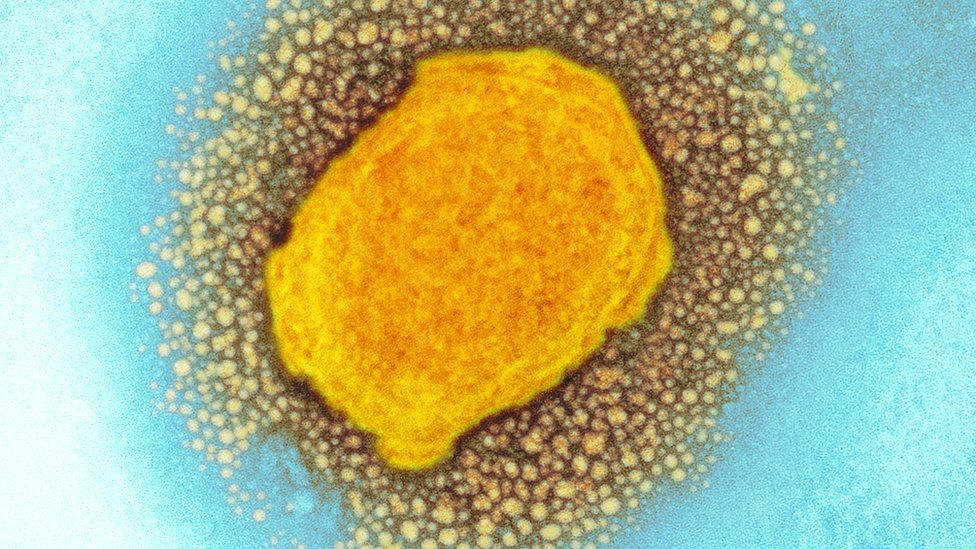Monkeypox case confirmed in England
- Published

A person in England has been diagnosed with the monkeypox virus, the UK Health Security Agency has said.
The patient had recently travelled to Nigeria, where they are believed to have caught the virus before coming to the UK, the health agency said.
They are now being treated at an expert infectious disease unit at Guy's and St Thomas' NHS trust in London.
Monkeypox is a rare viral infection from which most people recover in a few weeks, according to the NHS.
The UKHSA said monkeypox does not spread easily between people and the risk to the wider public was very low.
In an update published on Saturday, the health agency said: "As a precautionary measure, UKHSA experts are working closely with NHS colleagues and will be contacting people who might have been in close contact with the individual to provide information and health advice."
The first-ever recorded occurrence of the virus in the UK was in 2018, and since then a handful of cases have been confirmed by health authorities.
Monkeypox: What are the symptoms and how do you catch it?
Initial symptoms of monkeypox include fever, headache, muscle aches, backache, swollen lymph nodes, chills and exhaustion, the UKHSA said.
A rash can develop, often beginning on the face, then spreading to other parts of the body. The rash changes and goes through different stages before finally forming a scab, which later falls off.
It can be spread when someone is in close contact with an infected person. The virus can enter the body through broken skin, the respiratory tract or through the eyes, nose or mouth.
It can also be spread by contact with infected animals such as monkeys, rats and squirrels, or by virus-contaminated objects, such as bedding and clothing.
Read more about the virus here.
- Published5 August 2022